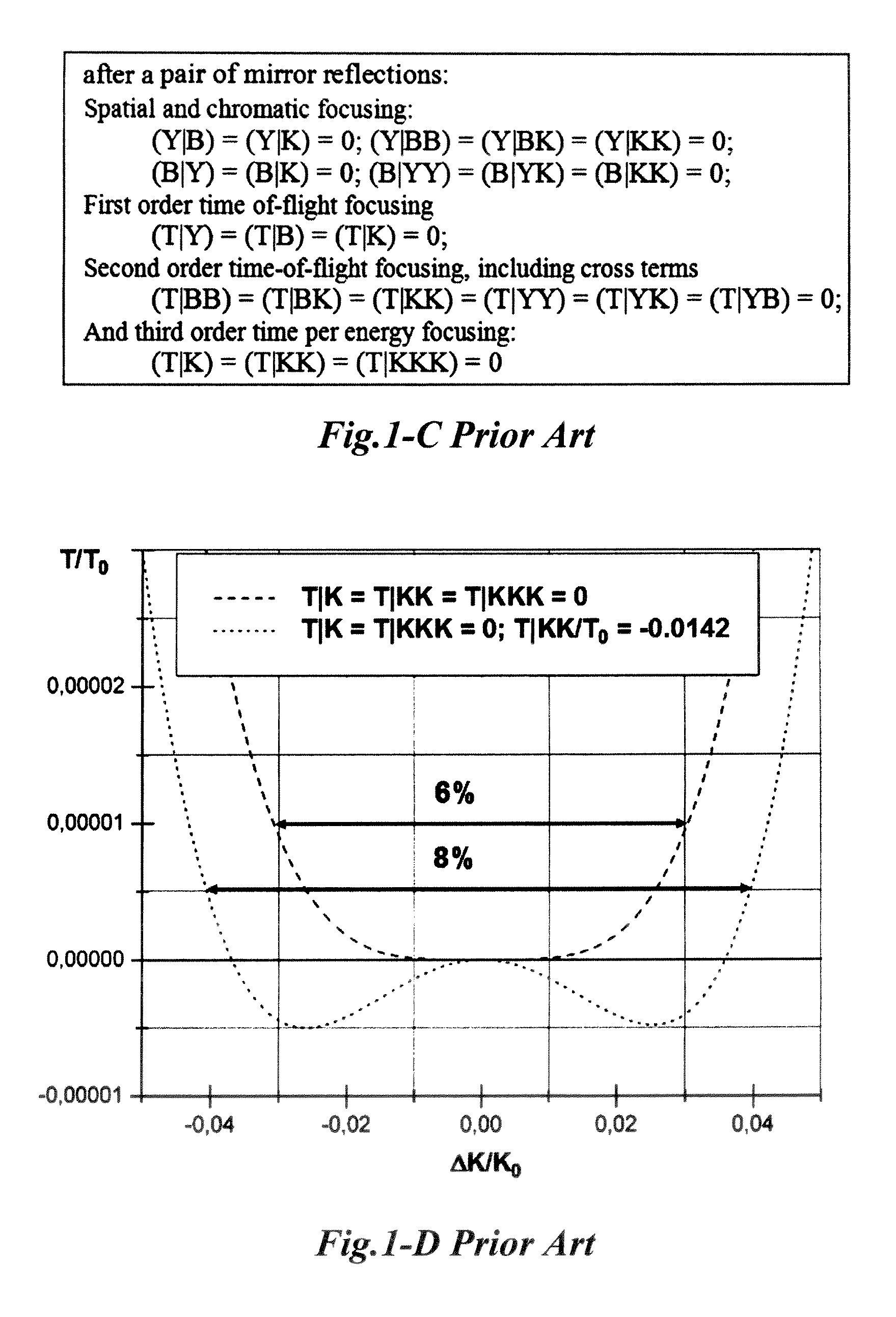Electrostatic ion mirrors
a technology of electrostatic ion mirrors and ion mirrors, applied in the field of electrostatic traps and multi-reflecting timeofflight mass spectrometers, can solve the problems of limiting the ability of forming short ion packets in the ion source, limiting the ability of forming proper field in the reflecting region, and the range of energy focusing stills
- Summary
- Abstract
- Description
- Claims
- Application Information
AI Technical Summary
Benefits of technology
Problems solved by technology
Method used
Image
Examples
Embodiment Construction
Definitions and Notations
[0056]All of the considered isochronous electrostatic analyzers are characterized by two dimensional electrostatic fields in an XY-plane: X corresponds to the time separating axis (e.g. to direction of ion reflection by ion mirrors); Y corresponds to the second direction of the two-dimensional electrostatic field; Z corresponds to the orthogonal drift direction (i.e., to the direction of substantial extension of ion mirror electrodes); Y and Z are also referred as transverse directions; A corresponds to an inclination angle to the X-axis in an XZ-plane; and B corresponds to an elevation angle to the Y-axis in an XY-plane. The definition stands for both considered cases of electrostatic analyzers: the first one is composed of plates extended in the Z-direction and forms a planar two-dimensional field; the second one is composed of two sets of coaxial rings and forms a cylindrical field gap with two-dimensional field of cylindrical symmetry.
[0057]Ion packets c...
PUM
 Login to View More
Login to View More Abstract
Description
Claims
Application Information
 Login to View More
Login to View More - R&D
- Intellectual Property
- Life Sciences
- Materials
- Tech Scout
- Unparalleled Data Quality
- Higher Quality Content
- 60% Fewer Hallucinations
Browse by: Latest US Patents, China's latest patents, Technical Efficacy Thesaurus, Application Domain, Technology Topic, Popular Technical Reports.
© 2025 PatSnap. All rights reserved.Legal|Privacy policy|Modern Slavery Act Transparency Statement|Sitemap|About US| Contact US: help@patsnap.com



